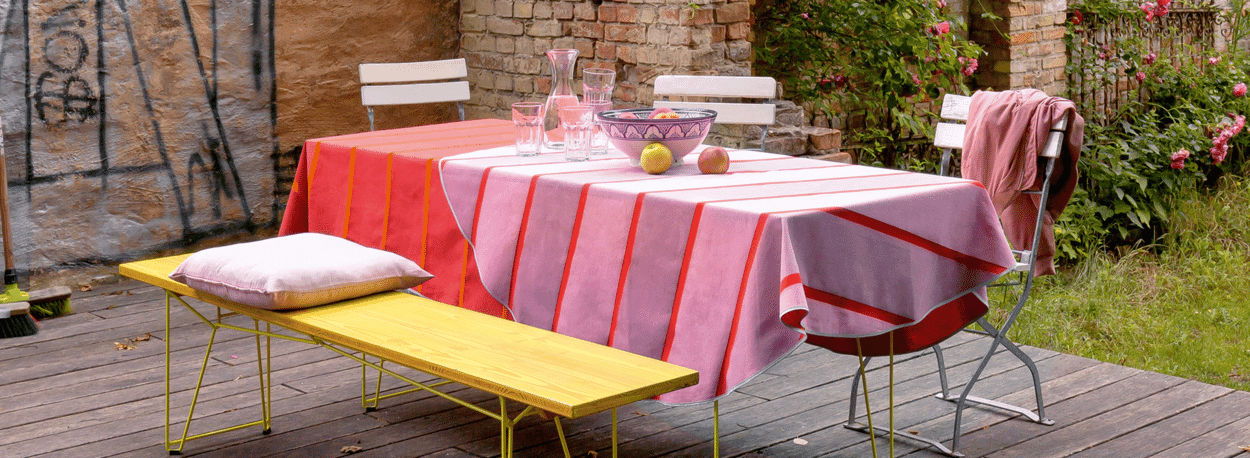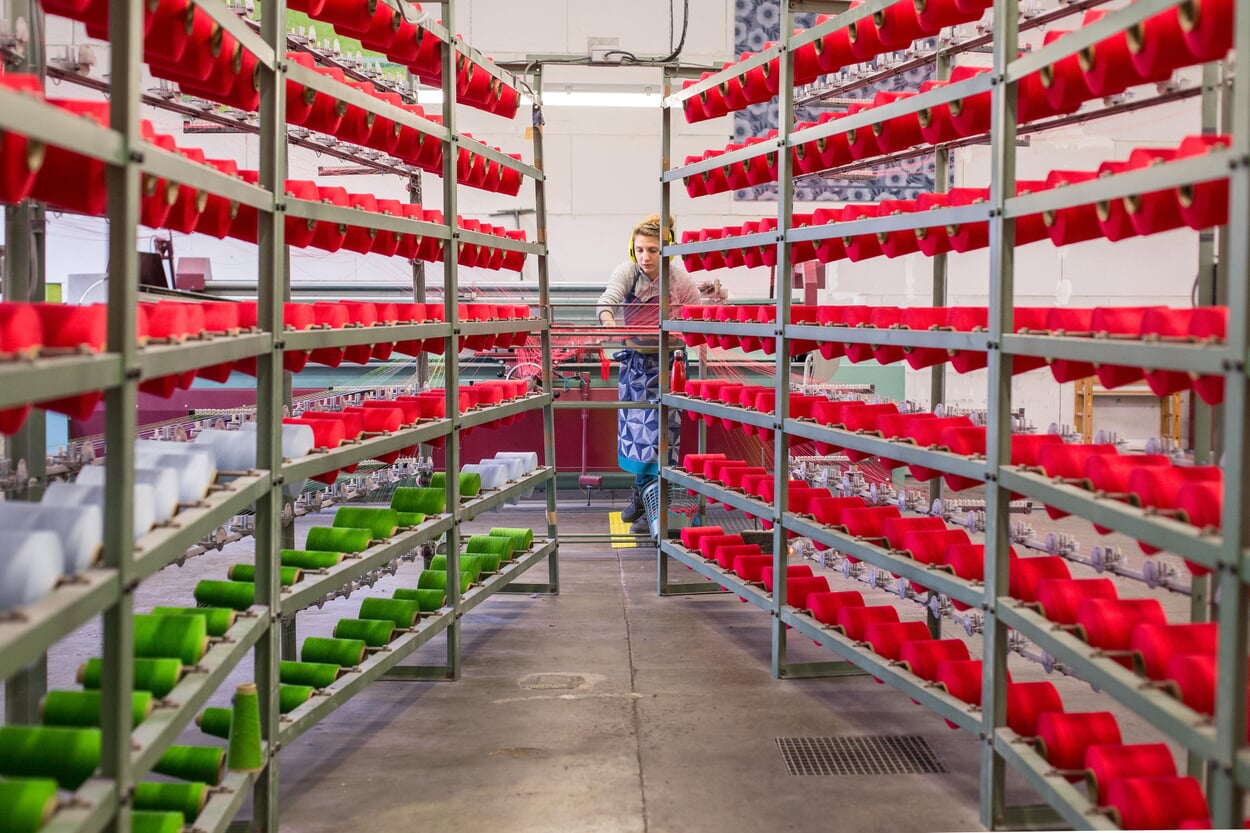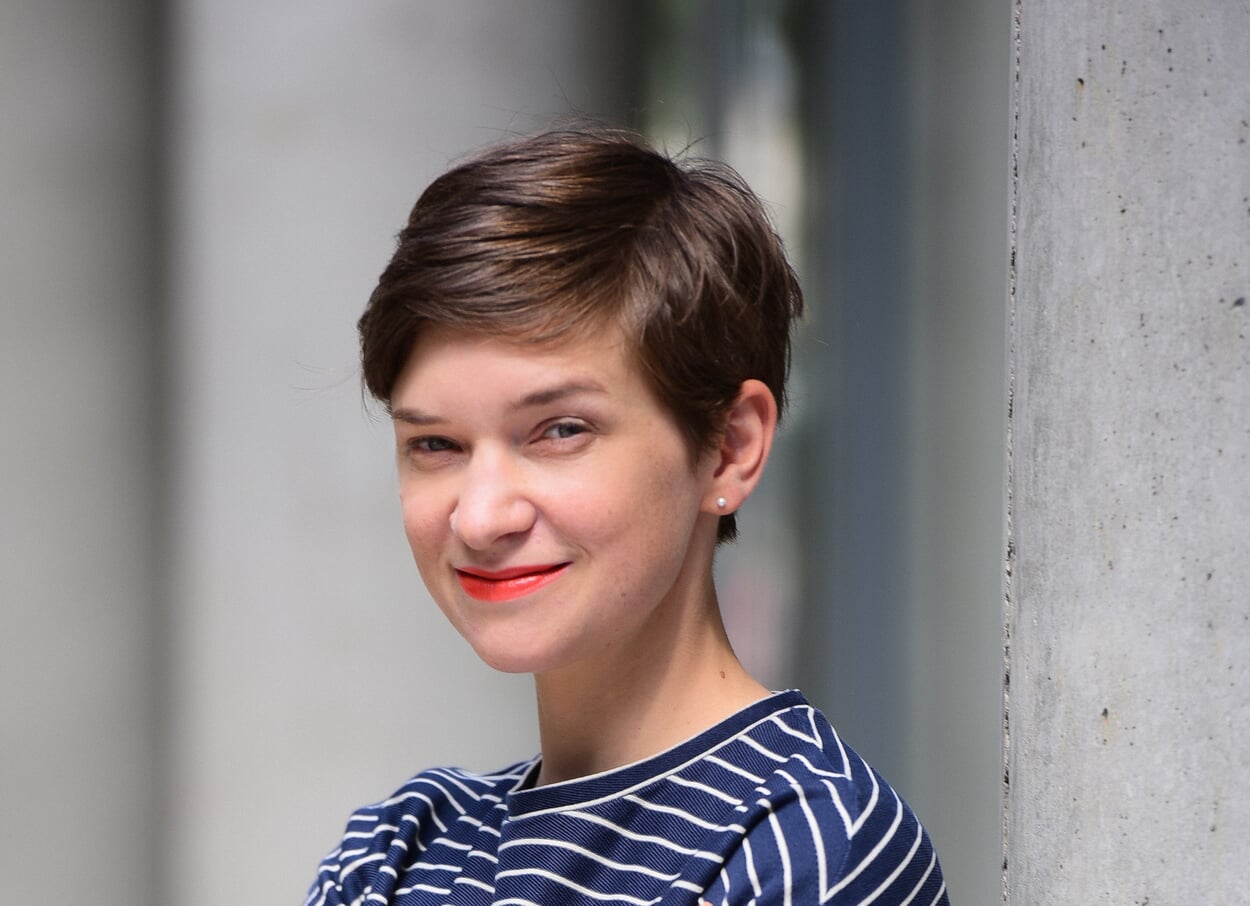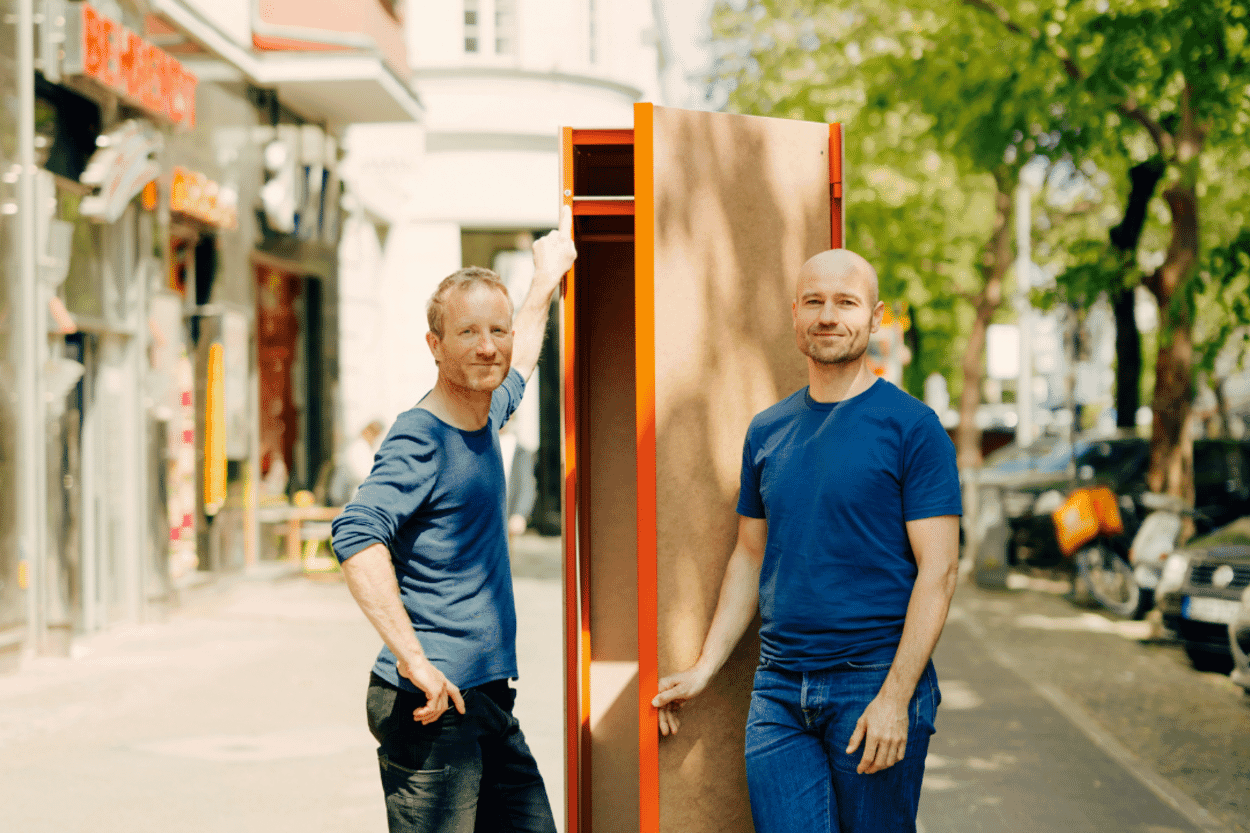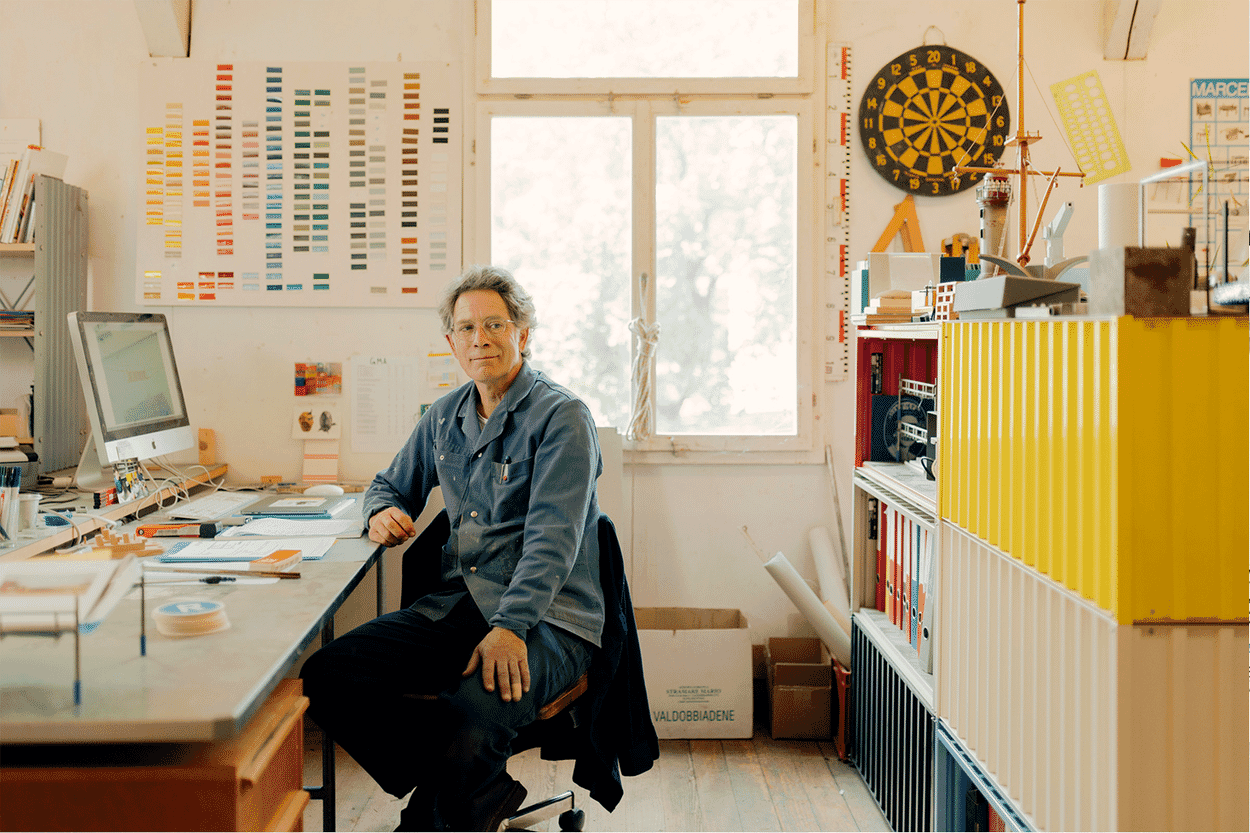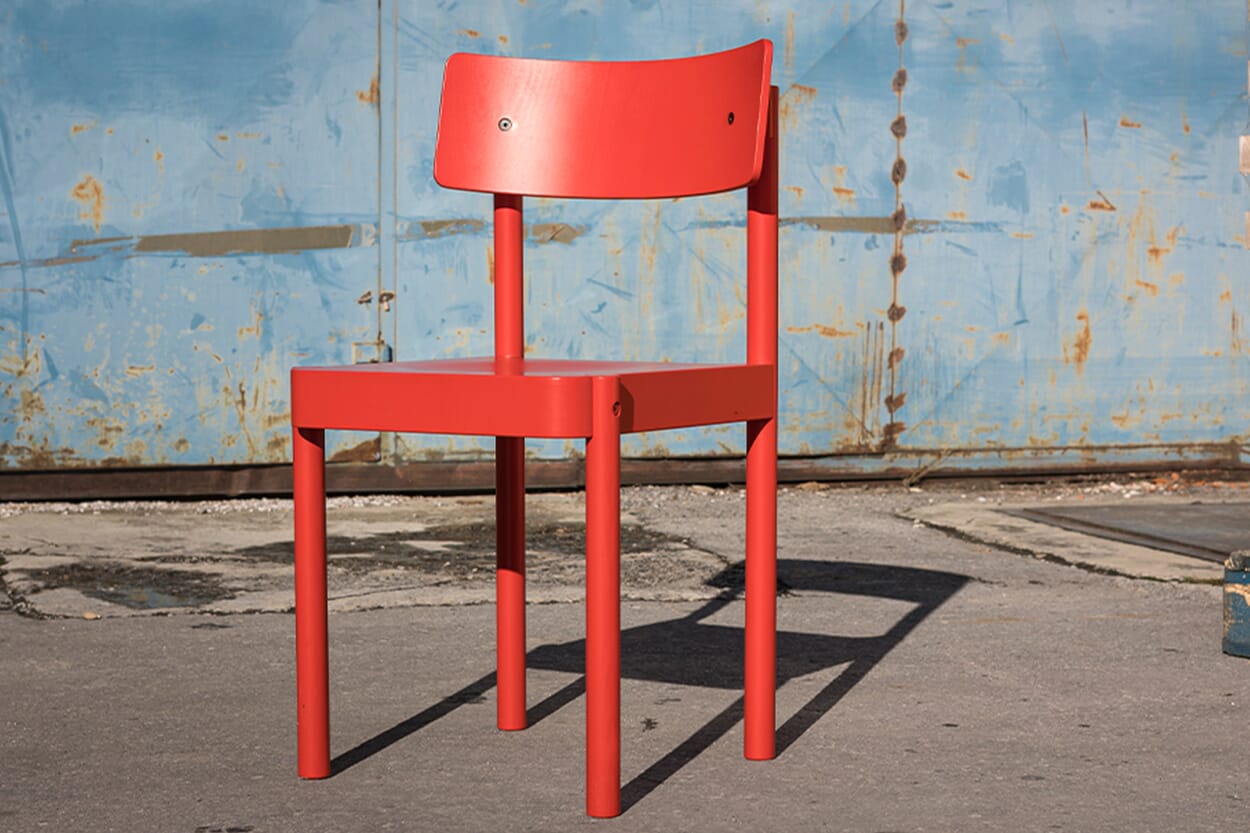Interaction on the table
The young designer Julia Dichte has developed a contemporary table linen series for MAGAZIN. EQUIPE is produced by a French weaving mill.
Text: Bettina Homann
One rule of good housekeeping used to be that the hostess should spill a glass of red wine at the beginning of a dinner. Afterwards, the guests could relax because they no longer had to worry about being responsible for the stains on the tablecloth. The washing and ironing effort has probably contributed to table linen going a little out of fashion. "I've actually always associated tablecloths with my grandma," says textile designer Julia Dichte. "With a rather dusty furnishing style." But precisely because it didn't seem obvious for a young designer, Dichte was tempted to rethink the topic of table linen. She did this during a three-month internship at MAGAZIN, for which she was selected as part of the German Design Graduates funding program. She impressed the jury with her bachelor's thesis "A pug came into the kitchen", in which she translated the abstract principle of recursion, a process that calls itself up again and again, like the famous children's song, into a blanket collection.
For MAGAZIN, which has its origins in industrial design, the bourgeois world of table linen was also somewhat outside the usual range. Exciting conditions for a new development. The result of this interplay is the EQUIPE collection, a series of striped square and round tablecloths in various sizes, which can be combined in a modular and versatile way to create table decorations and can also be laid on top of each other. Thanks to an ingenious weaving technique, the tablecloths can be used on both sides. And because the back looks different to the front, you have two in one, so to speak. "I wanted the blankets to be more flexible and fresher than you are used to, and the different sides give you the opportunity to express different moods," says Dichte. And if someone spills, you can simply turn the blanket over.
The series was developed together with the French textile weaving mill Tissage Moutet "We tried out a lot and experimented with different weaves," explains the designer, who spent some time in the French Basque country. Binding describes exactly how the threads are connected during the weaving process. To ensure that both sides of a fabric are not only "presentable" but also look different, a great deal of technical expertise and flexibility is required - both of which are available at Tissage Moutet. EQUIPE might even make those who don't like textiles want to set the table differently than usual. Especially as the robust fabric can be machine washed at 60 degrees and can therefore also be used by families with children without any worries.
JULIA DICHTE
Julia Dichte's path to textile design led her from training as a hairdresser to studying illustration, where she discovered her love of structures, patterns and surfaces. She attracted the attention of MAGAZIN with her bachelor's project at Burg Giebichenstein University of Art and Design. Dichte completed a Master's degree in Conceptual Textile Design at Burg Giebichenstein.
Pictures: @Tissage Moutet
Discover more MAGAZIN products
Space-consuming and conventional - that's how we know the closet. But there is another way, as MAGAZIN shows with the new MAGAZIN product P100: The wardrobe is based on a steel construction that is clad with panels made from a new, sustainable wood-based material. The aesthetics are also MAGAZIN through and through.
When Kuno Nüssli's Container DS found its way into the MAGAZIN range, nobody would have dreamed that the product would one day become a bestseller. We visited the universal creative Kuno Nüssli in Basel.
With the EINSER, MAGAZIN has the first chair of its own in its range. The simple wooden model is manufactured in a young company in Slovenia, where the tradition of wooden furniture production goes back a long way.

